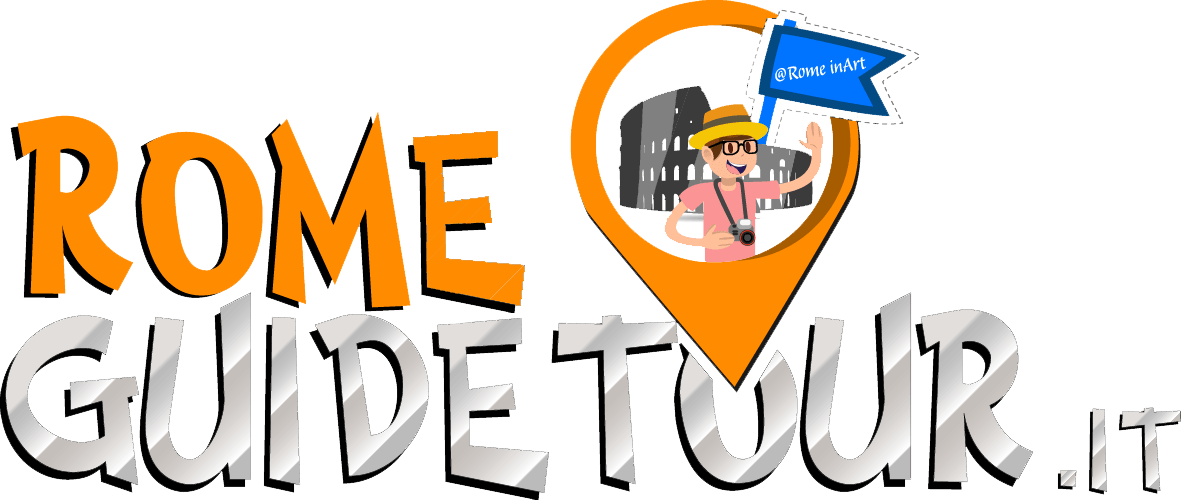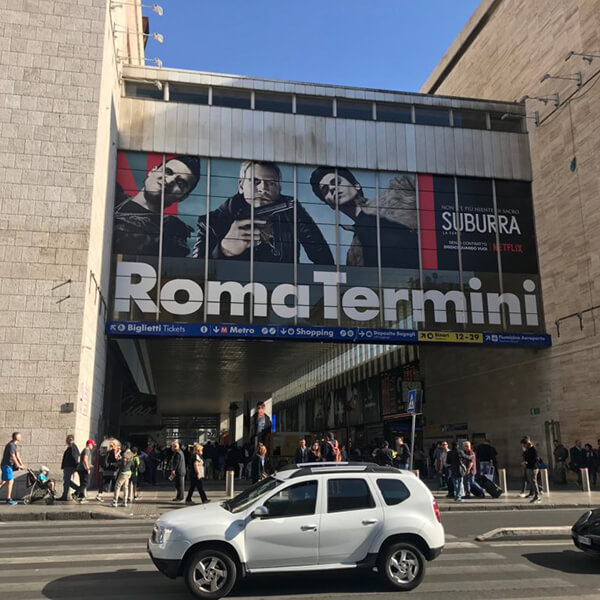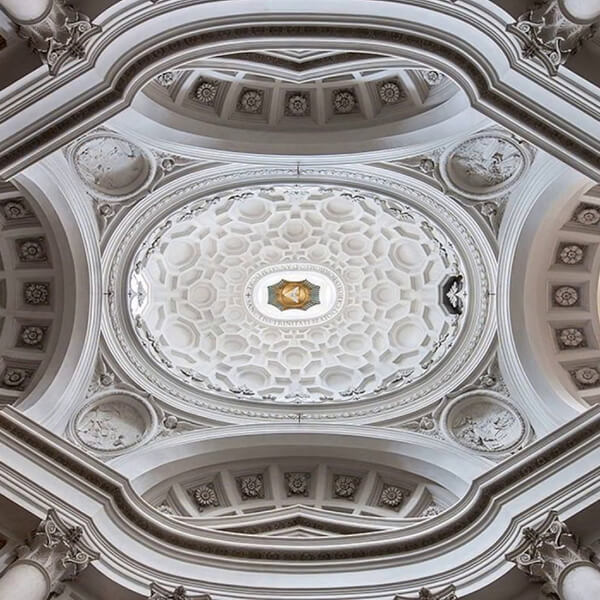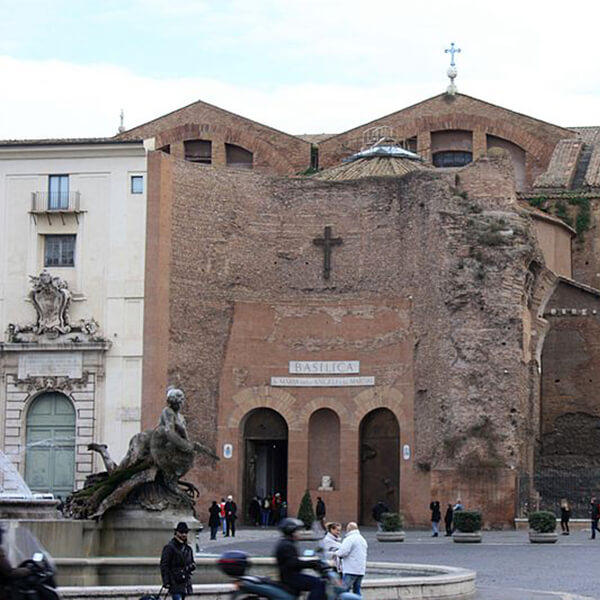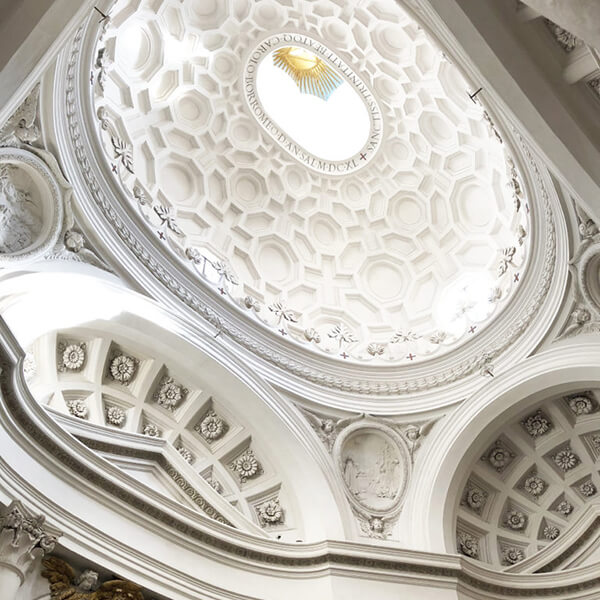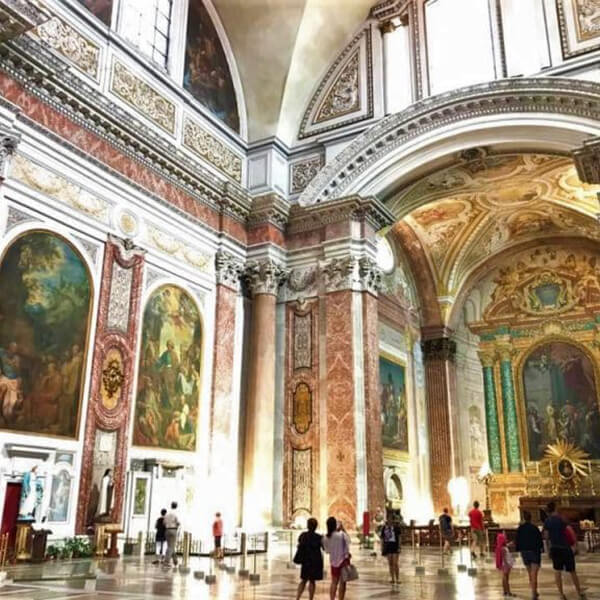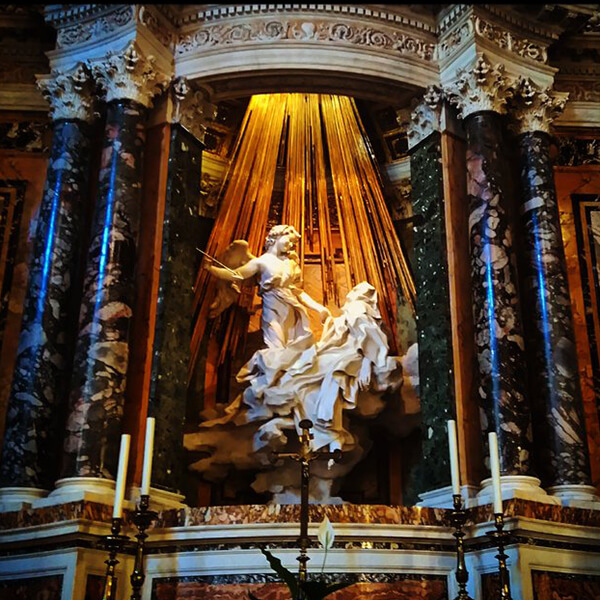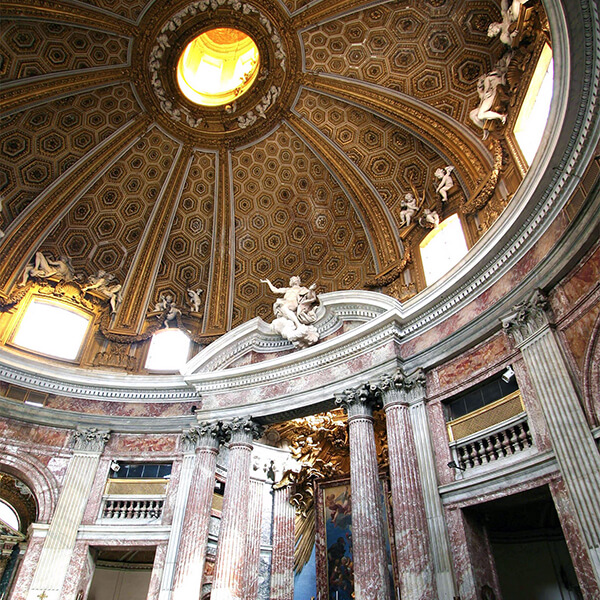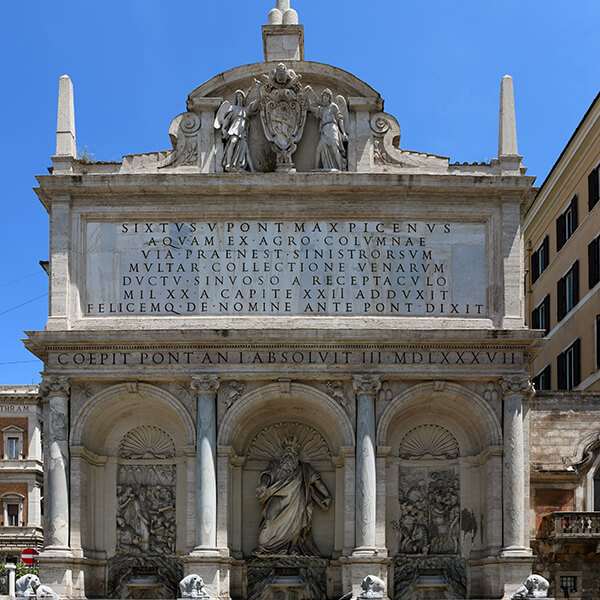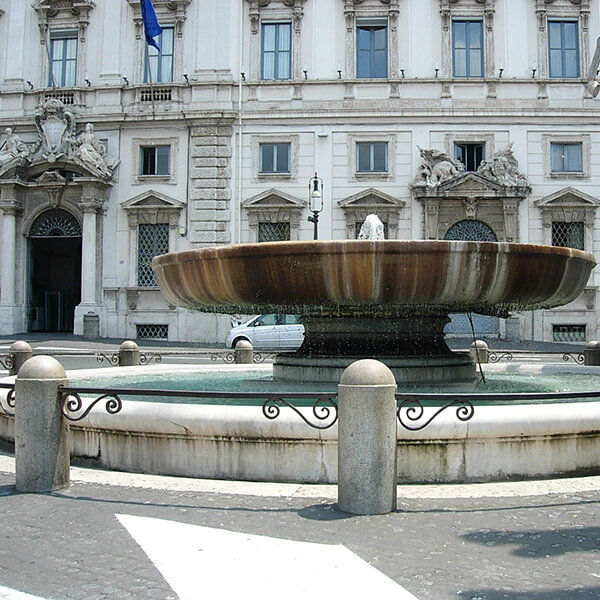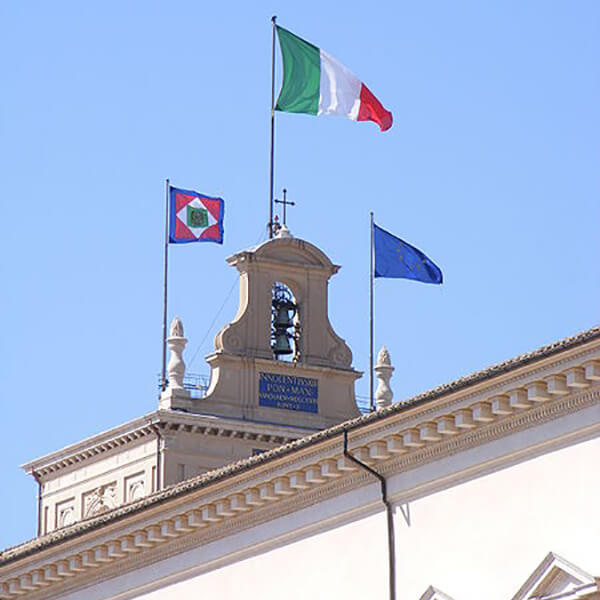Termini Station is one of the main points of arrival (and departure) for tourists who visit Rome. Termini is the central railway hub of Rome, and the arrival terminal of national and international trains, as well as shuttle buses that connect the city with the Roman airports of Fiumicino and Ciampino.
We have imagined a few possible scenarios tourist can face, starting with people who land in Rome from abroad, but their final destination is elsewhere, such as Florence, or Venice, or Naples, and they have a few spare hours in Termini before catching their train to their final destination. The other two scenarios are “classic” situations that involve having to “kill time” in Termini because there is still time until the hotel check-in, or having to leave the hotel for an early check-out but there are still a few hours before going to the airport.
In each case our advice is to leave your luggage at Termini’s luggage storage, and enjoy your last hours in Rome without the need of venturing too far from Termini station. Here is our suggestion on what to see in Rome near Termini Station, an easy itinerary in five stops.
First stop: Church of Santa Maria degli Angeli e dei Martiri
Right in front Termini Station is Piazza della Repubblica, where you can visit the Church of Santa Maria degli Angeli e dei Martiri, a church built on the remains of an ancient thermal plant, the Baths of Diocletian, the largest in ancient Rome. Inside the Church of Santa Maria degli Angeli e dei Martiri you can admire what once must have been the thermal environments of the tiepidarium and frigidarium, adapted for religious use by an exceptional architect, Michelangelo Buonarroti.
The hall of the Church of Santa Maria degli Angeli e dei Martiri treasures a sundial that Pope Clement XI commissioned to Francesco Bianchini for the Jubilee of 1700; the purpose of the construction of this sundial was to verify the correctness of the Gregorian Calendar and to determine the date of Easter in the most coherent way possible through the movements of the Sun and the Moon.
Crossing the sacristy of the Church of Santa Maria degli Angeli e dei Martiri it is possible to see the remains of the ancient structure of the Baths of Diocletian, specifically the natatio, whose remains were reused to create a convent to which a cloister was annexed over the centuries. If interested in learning more about the history of the Baths of Diocletian and the reuse of its materials over the centuries, visit the National Roman Museum (Museo Nazionale Romano) at Palazzo Massimo, which offers a combined integrated ticket (valid for 3 days) to visit Palazzo Massimo, Palazzo Altemps, Crypta Balbi and the Baths of Diocletian.
Second Stop: Fontana dell’Acqua Felice
Leaving the Basilica of Santa Maria degli Angeli e dei Martiri you will find yourself in the scenic Piazza dell’Esedra, which was built to give a monumental face to the city of Rome after becoming the capital of the Kingdom of Italy, and to offer a grandiose access to the historic center. Piazza dell’Esedra also houses other buildings that made up Diocletian’s thermal plant, and which were reused throughout the history of Rome for different purposes and functions.
Skirting Piazza dell’Esedra square on the right and leaving Termini Station behind you arrive at Largo Santa Susanna, where you will find yourself in front of the Fontana dell’Acqua Felice, the first of the Roman fountains purposely built as water displays.
The fountain is also known as the Fountain of Ridiculous Moses. The strange nickname is due to a nice legend, according to which the artist wanted to refer to Michelangelo‘s models, but the final result turned out to be rather stocky and cheap that he was baptised the “ridiculous Moses“. Legend also has it that one of the artists who created the Acqua Felice Fountain committed suicide due to shame over the ugliness of the statue.
Third stop: Church of Santa Maria della Vittoria
Crossing the road from Fontana dell’Acqua Felice it is possible to visit the Church of Santa Maria della Vittoria. The church was built in the 17th century by Carlo Maderno and was initially dedicated to Saint Paul at the behest of the Discalced Carmelites. Subsequently the church was renamed in honour of the Madonna, following the victory of the Catholic troops over the Protestant ones in the battle of White Mountain, in the scenario of the Thirty Years’ War. For this reason the icon of the Madonna placed on the main altar comes from Bohemia.
The work that perhaps most characterises the Church of Santa Maria della Vittoria is the Transverberation of Santa Teresa d’Avila by Gian Lorenzo Bernini. The work represents one of the greatest expressions of Baroque art, especially for its use of “theatricality“. In this work Bernini transforms a simple chapel into a theatre stage, where spectators look out from small side balconies connected to the clients of the work, the Cornaro family. The protagonist of the scene, Saint Teresa of Avila, is immortalised in the exact moment in which she experiences her mystical ecstasy. attributable to an erotic drive, a sort of sacred eroticism.
Fourth stop: Baroque Churches
Via XX Settembre connects Porta Pia with the Quirinale Palace, and it’s right past Church of Santa Maria della Vittoria. It is possible to encounter two churches that represent two different concepts of Baroque art, the Church of San Carlo alle 4 Fontane and the Church of Sant’Andrea al Quirinale. The first church is located near the intersection between Via XX Settembre and Via Sistina, precisely the intersection of the Four Fountains. These fountains were built semi-publicly, i.e. partially financed by private individuals, who supported their construction to have a water source closer to their buildings or lands.
the Church of San Carlo alle Quattro Fontane, also known as San Carlino due to its small size, is considered to be one of Francesco Borromini‘s Baroque masterpieces. The church is so small that its entire surface covers that of just one of the four pillars that support the dome of St. Peter’s Basilica in the Vatican.
Continuing on Via XX Settembre in the direction of the Quirinale, we arrive at another very characteristic baroque church, the Church of Sant’Andrea al Quirinale, the work of Gian Lorenzo Bernini. Unlike San Carlino alle Quattro Fontane, Sant’Andrea al Quirinale is imposing and rich; due to its shapes it partly recalls the Basilica of San Pietro in Vaticano (also designed by Bernini) and also the Pantheon (due to its central plan), even if unlike the latter the plan of Sant’Andrea is not circular but rather oval, a form that characterises Baroque architecture and its subsequent developments.
Fifth stop: Quirinale
Having arrived at the end of Via del Quirinale, at the height of Piazza del Quirinale, we find ourselves in front of the monumental Fountain of the Dioscuri (the sons of Jupiter), whose perhaps most characteristic element is the upper circular basin coming from Campo Vaccino, a name with which the Roman Forum was identified in the Middle Ages; in fact the tub was used for a long time as a drinking trough for animals.
The Quirinale palace has been the official palace of the President of the Italian Republic since 1946. Previously the Quirinale palace was used as the official residence of the King of Italy, who settled in the palace starting from 1870, after the fall of the pontifical state. In fact the Quirinale was also used as a papal residence, and several popes were elected inside this palace. A particular episode in the life of Palazzo Quirinale can be linked to the end of the temporal power of the popes over the city of Rome; upon the arrival of King Vittorio Emanuele, the door of the Quirinale palace was found locked, and it was necessary to call a blacksmith to allow access to the king who was not very enthusiastic about it, to the point that it is said that he exclaimed: “I don’t like it, it smells like a priest.”
Another element that characterises the Quirinale Palace are the three flags that stand out from the tower of the winds: the Italian flag, the European one, and a flag with concentric diamonds which represents the Italian Republic Presidency; the flag is hoisted on the tower if the President is in Rome, but if you do not see it this means that the President of the Republic is not in the capital at the moment.
From the Quirinale Palace you can go back quickly to Termini Station, as there are two metro stations close to Quirinale, Barberini and Repubblica stations.
Follow us to discover our suggestions for visiting Rome. Or contact us to book one of our most popular tours of Rome and its province, or custom Rome tours with special routes based on your interests and the time you have available to explore Rome.
